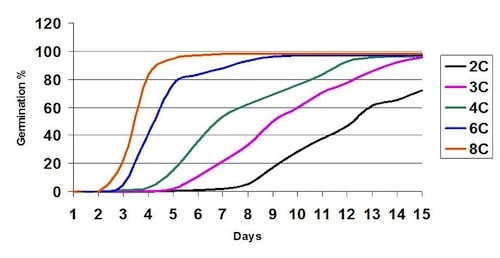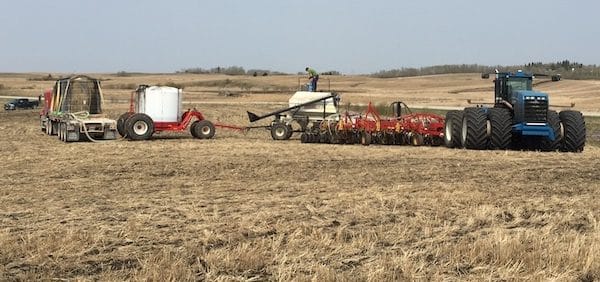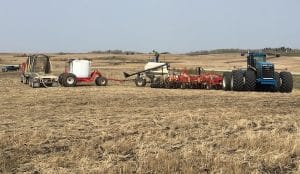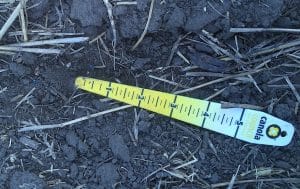The more details noted at seeding time, the more information farmers and agronomists have on hand for future decision making and problem solving. Here are our Top 10.
Hybrid name and lot number. Keep a record of hybrid names and seed lots. Keep small samples of all lots in a cool, dry place. Put a minimum 500 ml (2 cups) from each seed lot into a seed lab bag. Keep the blue seed tag.
Seed weight for each seed lot. Plug this into the Canola Calculator along with estimated emergence percentage to figure out an appropriate seeding rate to hit each target plant density. If you don’t know the farm’s typical emergence percentage, use the industry norm of 50-60%. The Canola Encyclopedia has more on seed size. Also…How does seed size influence seeding rate?
Seeding rate. Keep track of the seeding rate in lb./ac. for each field. You can plug that into the calculator along with seed size and plant counts (after the 2- to 4-leaf stage) to figure out the emergence percentage. Strive to improve emergence long term and consider what changes would be necessary to get to a 75 per cent average emergence.
Soil temperature. Keep record of the soil temperature at the time of seeding. Cold soils (<5°C) at seeding, and for two weeks following, can increase mortality by 10 to 20 per cent. But given the yield benefit of early seeding, soil temperature of 4°C or 5°C is a reasonable starting point. Recording soil temperature can help when sleuthing potential emergence issues, and can be a useful reference if emergence is very strong.

Soil moisture. Note the moisture situation (excess, good, average, dry, etc.) in the seed bed at various locations in the field, including hilltops and lower areas. Soil moisture can influence decisions about seeding depth and whether to seed at all in very moist conditions. Openers that are caked in mud and smear through the seed bed will lead to compromised seed placement.
Seeding date and time. Record the date and also the time of day that each crop was seeded. Comparing seeding dates, and cross referencing that with soil temperature and moisture conditions, can help determine future decisions with regard to ideal time of seeding and management steps that could be taken to reduce risks for early seeding. Time of day can sort out field order, which can be useful to determine when an equipment problem first occurred.
Drill performance – especially seeding depth, seeding speed and packing pressure. Check runs across the drill to see if you have any issues with placement and depth and rates row to row. How to check.
Weed pressure. Make a few notes about weeds in the field at the time of seeding. Include weeds per square foot, the most common three species present, and note their size/staging. With a pre-seed burnoff application, these notes will help describe the quality of the job and what weeds seem to have escaped. If pre-seed burnoff was not applied, use this information to assess the efficacy of post-emergence on these larger weeds.
Fertilizer blend, rates, placement. Note the product, rate and placement location of all fertilizers applied at the time of seeding. As a test of seed-placed fertilizer and its effect on canola emergence, turn off the seed-placed fertilizer for 50 to 100 feet and mark that spot. Check back regularly. If the non-fertilized area looks better, then the fertilizer had a negative impact on emergence and changes should be considered for future years.
Problem areas in the field. Write down any other observations that may be useful later, including saline patches, gopher holes, etc.



